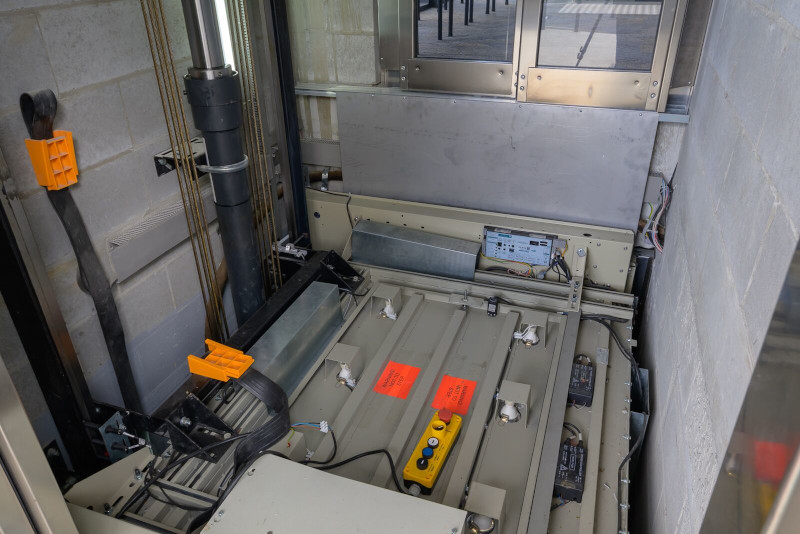
There are many types of residential lifts available, each working slightly differently due to the design and drive system of the lift. Each drive system comes with its own advantages. Choosing the right drive system for your home lift will depend on your specific requirements, budget, and available space.
Some of the most common drive systems used in residential lifts include hydraulic, traction, and screw nut systems. For personalised advice on choosing the right home lift and drive system for your needs, talk to your home lift specialists at Axis Lifts today on 1300 002 947.
Common Types Of Home Elevators (And How They Work)
Hydraulic Lift
Home elevators with hydraulic drive systems require more space than other common lift types as they need a separate machine room to house the electrical components. In a hydraulic lift system there is a piston in the hoistway which is connected to the hydraulic pump that work together to enable the lift to be lowered and raised between levels of the home.
A hydraulic lift is a relatively quiet drive system when in operation, and provides a smooth ride for maximum comfort. Additionally, residential lifts with a hydraulic drive system do not require a deep pit, which can make installation quicker and more cost effective.
Traction Lift
Traction lift drive systems operate using an electric motor and gearbox which are used to move the chain, in turn, lowering and raising the lift. Counterweights are often used with this drive system to increase energy efficiency by offsetting the weight.
A traction lift is a great option for homes where space is limited as all of the electrical components of the lift are housed within the elevator shaft. Home elevators operating on a traction lift drive system are also quieter than other types of lifts as all of the working components are housed within the hoistway.
Screw Nut Lift
Elevators with a screw nut drive system use a long screw shaft and drive nut. The drive nut is attached to the platform with an electric motor connected to the screw shaft by belts. The platform is then moved up or down the shaft as the screw shaft rotates.
The speed of a platform lift run on a screw nut drive system can be up to 50% slower than traction or hydraulic lifts, however, this is ideal for use in residential applications where travel distance is typically shorter. Home elevators with a screw nut drive system do not require a separate machine room and can be installed with a shallow pit or ramp to minimise building works and installation costs.
Which Type Of Home Elevator Is Best?
Choosing the right type of elevator for your home depends on your specific requirements and preferences. Axis Lifts is Queensland’s leading lift provider, offering a wide range of home elevators including hydraulic, traction, and screw nut home lifts.
Axis Lifts offers affordable home lift services Brisbane and Queensland wide, including affordable lift installations, servicing, and repairs. Each lift we offer is highly customisable and can be designed to seamlessly fit into your home decor. For more information on choosing the right type of home lift for your needs, call us today on 1300 002 947 or visit our residential lifts product page.



